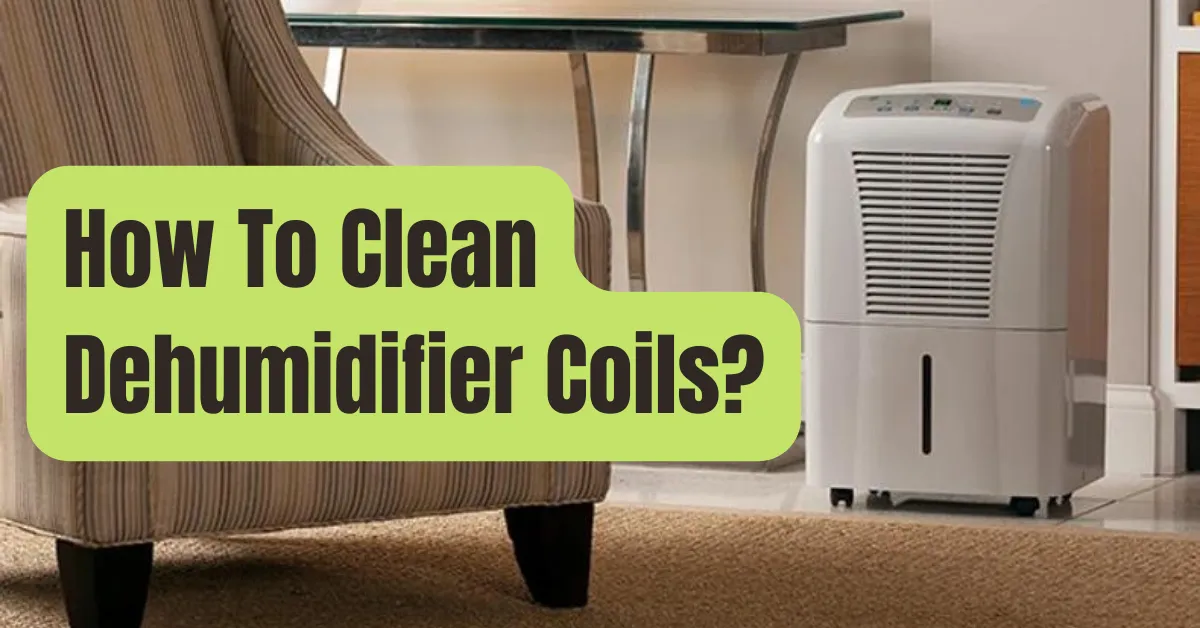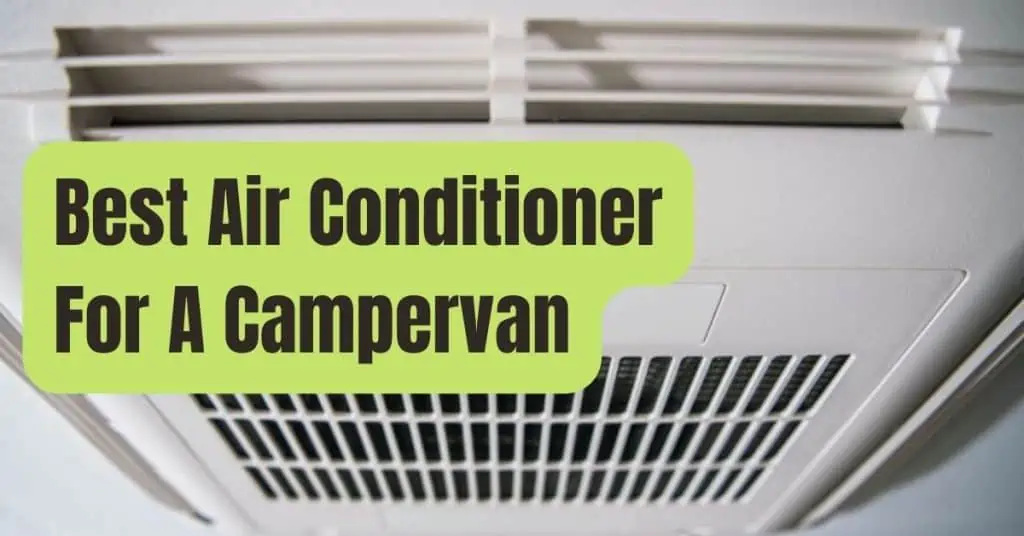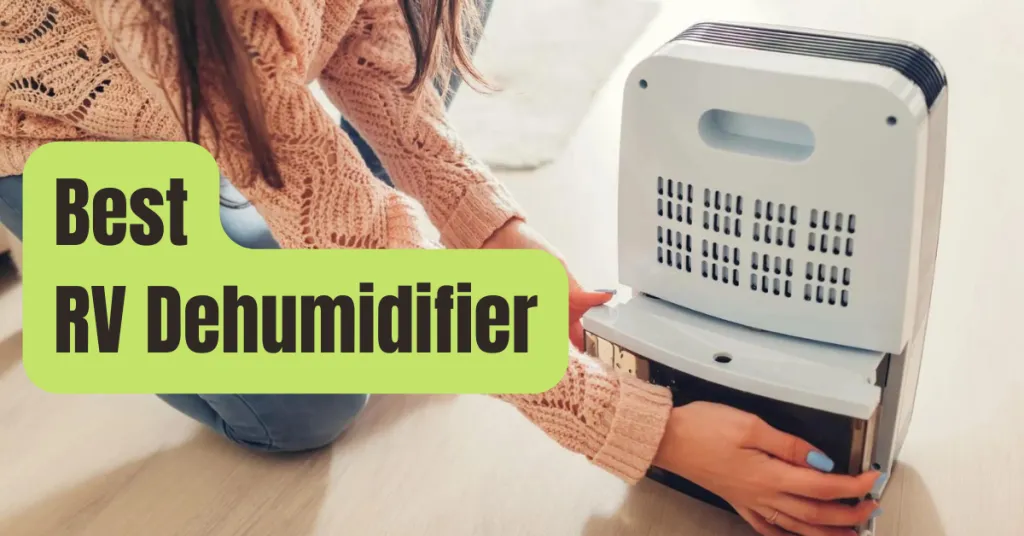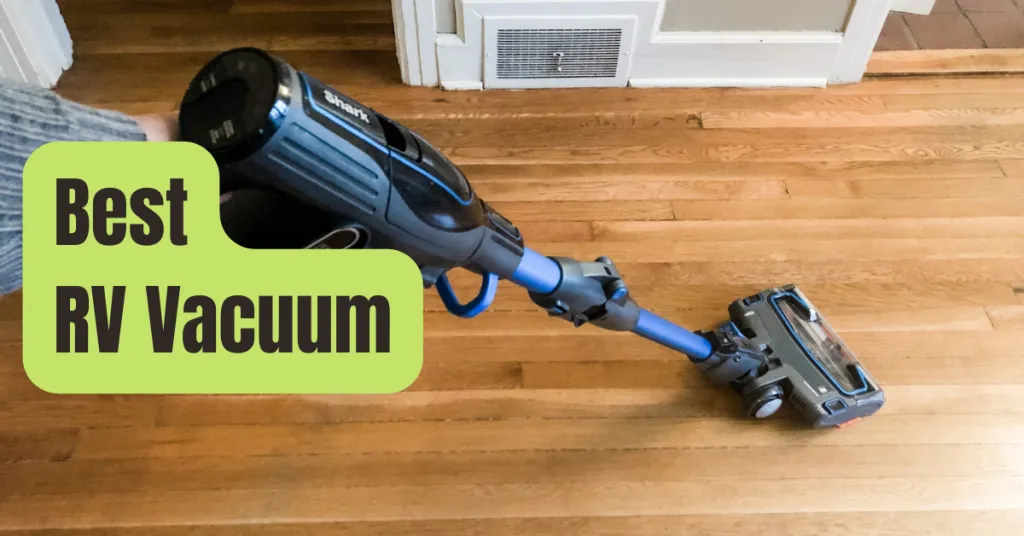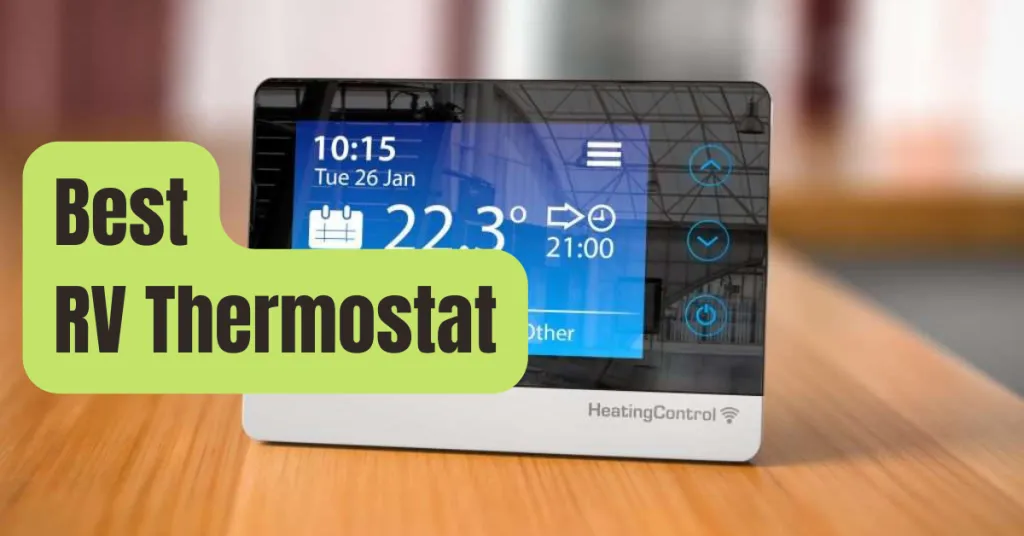Your dehumidifier comes into touch with a variety of contaminants when it removes moisture from the air.
Mold and mildew thrive in the moisture, dust, and grime found within dehumidifiers.
If not controlled, it may even serve as a growing environment for germs.
Your dehumidifier requires frequent tank emptying in addition to a thorough cleaning.
Cleaning is crucial, particularly in the muggy months.
Your dehumidifier will be exposed to a lot more water and filth if you use it every day.
If you want to maintain your dehumidifier functioning properly, cleaning it is a crucial duty.
Maintaining a clean dehumidifier can also guarantee that the air within your house is safe to breathe.
Dehumidifier bacteria and mold development might ultimately make their way into your home’s air supply.
The many components of a dehumidifier will be examined in this article, along with step-by-step cleaning instructions.
I’ll also go over how to clean your dehumidifier and what not to do.
How To Use Vinegar To Clean A Dehumidifier
One of the simplest methods to clean and sanitize your dehumidifier is by using vinegar.
It’s possible to stop mold from growing inside your dehumidifier by using a vinegar solution.
To clean your dehumidifier, we advise mixing equal parts water and vinegar in a solution.
Simply combine the water and vinegar, then clean the inside of your dehumidifier’s tank and any other soiled parts with this mixture.
For the majority of individuals, using a vinegar solution is a great option since it is accessible and secure.
The majority of dehumidifiers may be cleaned and hygienically treated using a vinegar solution.
We advise utilizing a vinegar solution to clean the majority of a dehumidifier’s plastic components, including its tank and body.
For information on how to clean out the various components of your dehumidifier, continue reading below.
How To Clean The Filter On A Dehumidifier
The filter of a dehumidifier may be cleaned the most easily.
The filter on your dehumidifier has to be cleaned on a regular basis, such as once per month.
You may need to clean it more often during times of high use, particularly if you have dogs.
The majority of dehumidifiers include a washable filter inside.
These filters typically feature a tiny mesh screen and a plastic frame.
Rinsing these filters with water is an easy way to clean them.
If required, you may also apply a mild detergent.
Use these procedures to clean the dehumidifier’s filter:
- Your dehumidifier must be turned off and unplugged. Before doing any maintenance on your dehumidifier, turn it off and unplug it.
- Take the filter off. Remove the dehumidifier’s filter. Carefully remove any extra dust from the filter if there is any. You don’t want dust to start blowing about.
- Remove any extra dust. Delete any further dust accumulation on the filter. No extra equipment is required; your hand will suffice.
- Use water to rinse. For dirtier filters, a water rinse is required to thoroughly remove the dust from the filter mesh.
- Filter evaporation. Before reinstalling the filter in the dehumidifier, give it time to thoroughly dry. You may check to see whether any dust is still adhered to the filter after it has dried.
Applying too much pressure on reusable filters while cleaning them might damage them. Most of the time, cleaning them won’t even need a brush.
Keeping A Dehumidifier Tank Clean
One of a dehumidifier’s dirtiest components is the tank.
Mineral deposits may develop on the internal walls of the tank due to the continual replenishing of the water.
If the tank is not kept clean, mold will also develop there.
To clean the tank of your dehumidifier, do the following:
1. Your dehumidifier must be turned off and unplugged. Before doing any maintenance on your dehumidifier, turn it off and unplug it.
2. Take the tank out. Remove the dehumidifier’s tank and completely drain the water within.
3. Get your cleaning solution ready. To clean your dehumidifier tank, mix white vinegar and water in a solution. As an alternative, a dish soap and water solution can do the job just fine.
4. In the cleaning solution, soak the tank. Fill the tank with your cleaning solution, then swirl it around. All of the internal surfaces of the tank should be in touch with the cleaning solution. Allow the cleaning solution to soften the mineral and mold buildup within the tank for 30 minutes. Longer soak times should be used for obstinate buildup.
5. Tank cleaning. Clean the tank’s internal surfaces using a gentle scrubber. Any buildup that the solution didn’t get rid of on its own should be removed.
It’s also crucial what sort of scrubber you use to clean your dehumidifier. Clean your dehumidifier using a nylon brush or another non-abrasive scrubber. A toothbrush may be used to clean crevices and nooks.
Avoid using those green scrubbers since they will damage the dehumidifier’s plastic.
6. Cleaning the tank. After removing any buildup with a scrub brush, rinse the tank with water, let it air dry fully, and then replace it on the dehumidifier.
How To Clean The Coils Of A Dehumidifier
The dehumidifier’s coil is where all the magic occurs. Water condenses when air moves through a chilly coil, collecting in a tank. That’s basically how dehumidification works.
The coils may get rather filthy with all much airflow, particularly because they also become damp. To maintain your dehumidifier operating properly, the coils must be cleaned.
Observe these methods to clean your dehumidifier’s coils:
1. Your dehumidifier must be turned off and unplugged. Before doing any maintenance on your dehumidifier, turn it off and unplug it.
2. Take the dehumidifier apart. Your dehumidifier’s protective covering should be removed to reveal the coil. Make sure to take meticulous notes on how the components go together so you can reassemble it after you’re through. Take a lot of photos.
3. Remove any extra dust. Remove the coil’s extra dust with caution. Avoid using compressed air or any other tool that might force dust into the coil. Instead, use a vacuum.
4. Clean your coils (if necessary). You may clean the coils of your dehumidifier by using a coil cleaning solution. For the majority of uses, a spray cleaner with detergent will suffice.
You could need to rinse your coils with water after cleaning them, depending on the kind of cleaner you use. Even while some AC coil cleaners don’t need rinsing after use, it’s still advisable to wipe out as much cleaner as you can.
5. Dehumidifier reassembling. Reassemble your dehumidifier after you’ve finished cleaning it. Before putting the dehumidifier back together and operating it once again, make sure it is totally dry.
Best for Most Coils

Nu-Calgon Evap Foam No Rinse Evaporator Coil Cleaner
Your dehumidifier coils may be cleaned of filth buildup with this spray-on cleaning.
Even better, you don’t need to rinse it off after using it.
The Best Way To Remove Mold From A Dehumidifier
Unfortunately, mold thrives in the warm, humid atmosphere found within dehumidifiers.
Mold will appear and start to feed on the dirt and dust that are collecting within your dehumidifier.
Maintaining a dehumidifier’s cleanliness over time is necessary to prevent mold growth.
Keep your dehumidifier clean and free of extra dust and water at all times.
Regularly empty and clean the dehumidifier’s tank.
You could even need to empty your tank every day in the humid months.
Follow these instructions to get rid of any mold development within your dehumidifier:
- Your dehumidifier must be turned off and unplugged. Before doing any maintenance on your dehumidifier, turn it off and unplug it.
- Look at the mold development. Look inside your dehumidifier to see how much mold has grown there. Is it confined to one place? Or has it moved to several locations within the dehumidifier?
- Dehumidifier maintenance. You may need to clean one or more components of the dehumidifier, depending on the size of the mold development.
- Use a mold-removal agent. Use an anti-mold spray to stop the formation of persistent mold that keeps returning.
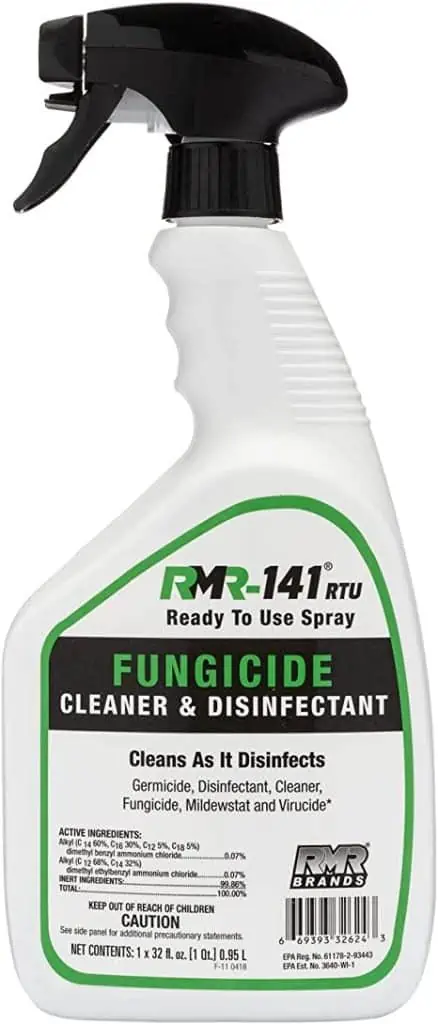
RMR-141 Disinfectant Spray
This EPA-registered disinfectant prevents the development of bacteria, viruses, and mold.
Use of the product on vents and ducts is safe since t won’t corrode metal or remove paint.

